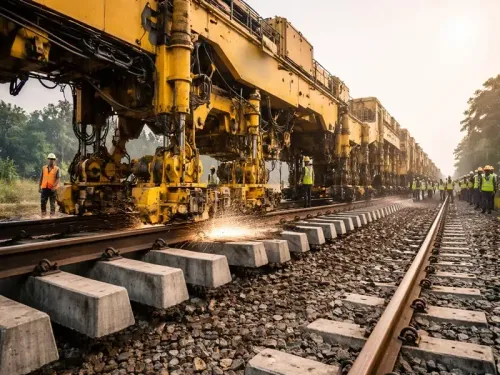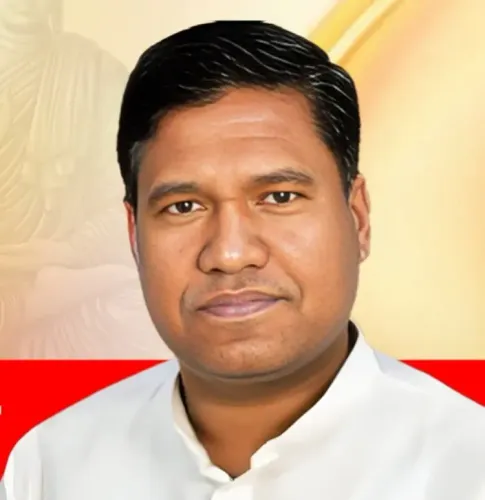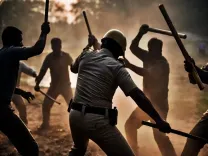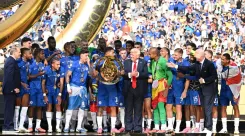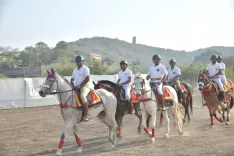Did Nepal's Army Thwart an External Scheme to Install a Puppet Regime, Unlike Bangladesh?
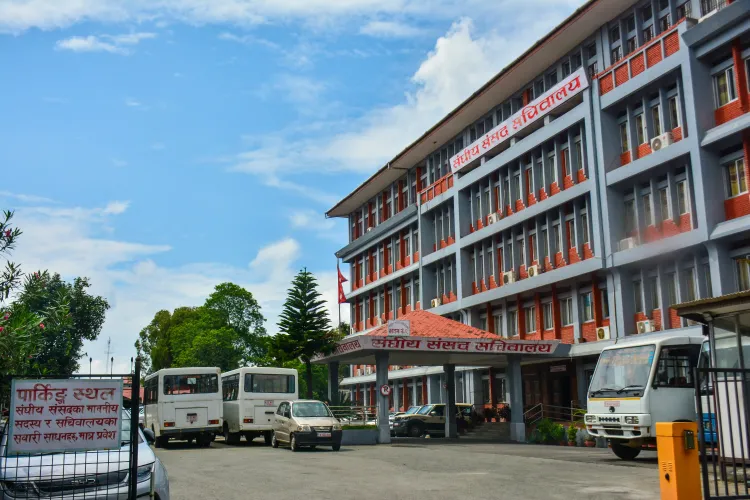
Synopsis
Key Takeaways
- Strong military support for protestors was crucial in Nepal's political stability.
- Corruption and nepotism were central issues driving the protests.
- The swift resolution of the crisis in Nepal prevented foreign influence.
- Bangladesh's situation highlights the dangers of external manipulation.
- Public engagement is vital for a healthy democracy.
New Delhi, Sep 15 (NationPress) The developments in Nepal bear a striking resemblance to the situation that unfolded in Bangladesh. While external forces managed to achieve their goals in Bangladesh with the aid of radical Islamists, their plans failed to materialize in Nepal.
In Bangladesh, a student uprising resulted in the removal of Sheikh Hasina and the appointment of Muhammad Yunus, who is widely viewed as a puppet of the deep state and ISI. The students protested against Sheikh Hasina's autocratic regime.
Conversely, in Nepal, the youth protests were primarily aimed at corrupt politicians. Protesters voiced their concerns that the political elite and their privileged children were the ones benefiting from national resources, while the general populace was left in the lurch.
Following Sheikh Hasina's government collapse, Muhammad Yunus took on the role of caretaker for the interim administration. This opened the door for the ISI, which proceeded to establish several agreements with Dhaka, including water usage and the easing of visa restrictions. India expressed concerns that these arrangements could enable ISI to smuggle weapons and terrorists into Bangladesh, posing a threat to Indian security.
While the external maneuvering succeeded in Bangladesh, the scenario did not unfold similarly in Nepal. Although foreign involvement in the protests could not be entirely dismissed, the anticipated outcomes did not materialize as expected.
Agencies like the ISI would have preferred a puppet regime in Nepal, but the army remained steadfast. It fully supported the Gen Z protesters and ensured that a compliant leader would not take charge of the nation.
In Nepal, the protesters' grievances were legitimate, highlighting widespread anger over corruption and nepotism that had been festering for years. The scale of the uprising had been brewing for some time. When significant protests occur, foreign interests often seek to install a leader who serves their agenda.
The Nepal crisis was resolved in a mere three days, resulting in the appointment of an interim Prime Minister. While Bangladesh also swiftly appointed a caretaker, the situation deteriorated under Yunus, leading to a breakdown of law and order. He granted the Jamaat-e-Islami free rein, resulting in the persecution of minorities and calls for the establishment of Sharia law.
The contrast between Nepal and Bangladesh lies in how their respective armies managed the situations. The Bangladesh army stood by idly during the turmoil, largely due to ISI's influence over many senior military officials.
General Waker-Uz-Zaman initially voiced his discontent with the events in his country, yet he remained largely isolated. His colleagues favored Pakistan, allowing the army to remain passive while radicals wreaked havoc.
In contrast, the Nepalese army took decisive action once K.P. Oli and his corrupt associates resigned. Army Chief General Ashok Raj Sigdel assessed the situation and sided with the protesters, acknowledging their valid points against corruption and nepotism. He promptly appeared on television, calling for calm and restraint.
The army chief firmly supported the Gen Z protestors and assured them that a leader of their choice would be appointed as the interim head.
He also coordinated with the President of Nepal, who urged the protesters to cease violence at all costs while emphasizing the importance of selecting a leader without delay. An ultimatum was set for choosing a leader within 24 hours.
These actions thwarted external players from imposing a puppet regime. Indian officials noted that the Nepalese army chief and president recognized that continued protests would persist unless Gen Z was given the opportunity to elect their own leader.
Had the protests continued, it would have been easier for outside influences to penetrate Nepal and install a puppet leader, who, like Oli, would likely adopt an anti-India stance.


